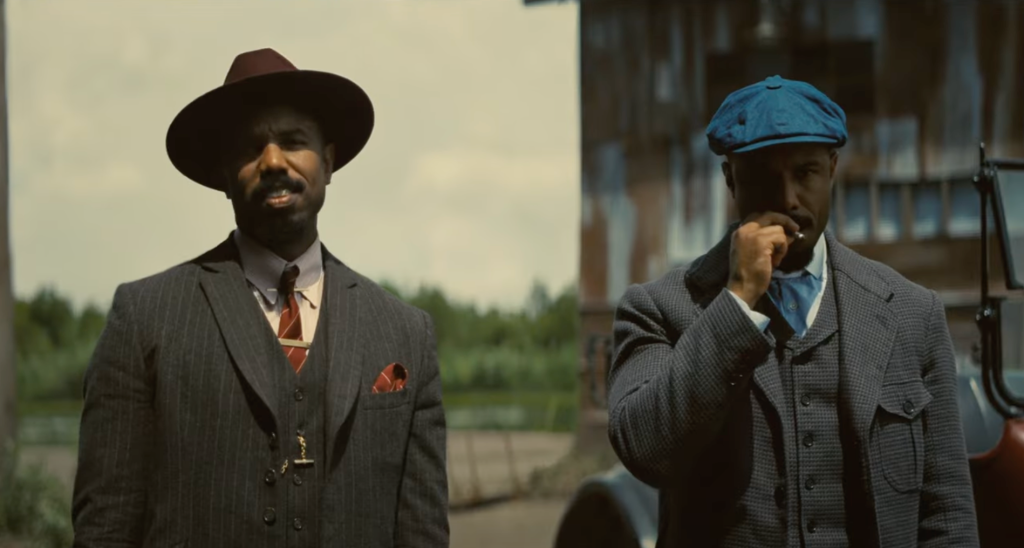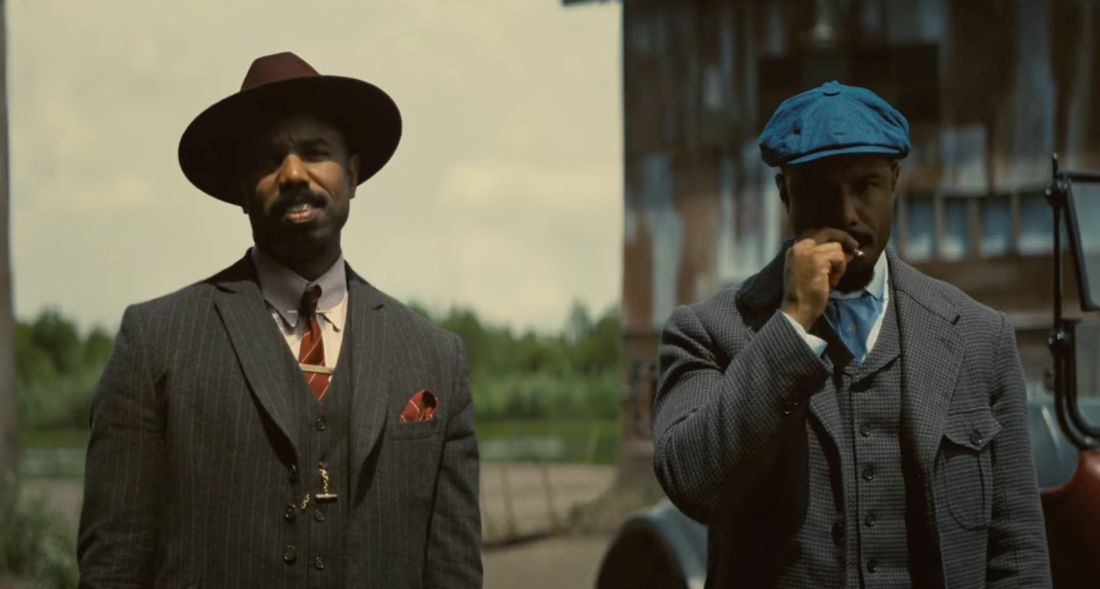
Warning: This is full of spoilers.
A few thoughts on Sinners.
The heart of Ryan Coogler’s Sinners (2025) is its paired musical numbers. The first, a multi-generational musical conjuring of community within a burning building, is an irreal visualization of the joy music creates. This explicit metacommentary on the pleasures found in the music at the diegetic jukejoint features musical figures from the past and future of Black and Asian cultures. Coogler pairs this scene with another of the same characters, now become vampires, dancing together while singing an Irish song. We don’t need to get into musicology and the ways that Irish folk songs and fiddle tunes found their way into country blues to understand the point. The first scene is about music’s communal power to connect generations. The second is about how white culture parasitically extracts this power for its own enjoyment. In the first scene, figures from the past and the future join the dance and reshape the music. In the second, there is no past, no future, only vampiric spasm of pleasures.
The plot is built around this dichotomy. The brothers Smoke and Stack open the jukejoint but confront different fates. One becomes a vampire, the other dies after killing every member of the local KKK. This pairing alone would suggest ideas about “true” Black culture as engaged in a fruitless life and death struggle with white supremacy. Smoke kills the KKK, but he dies of a bullet wound. This allows him to reunite with his love and his child in the afterlife, as the film shows, but these pleasures are simply unavailable in the present of 1932.
Stack’s vampirism is an assimilationism. The two brothers’ downfall isn’t simply the result of white vampires–who were also once part of the KKK–but of Stack’s love, Mary, who can pass for white. The brothers turn the white Irish vampire musicians away, but when they realize they’re not making enough money, she offers to see if these white people have money to spend. They do, but it comes with a price. Mary becomes the first of the joint’s patrons to turn, and she turns Stack next.
The leader of what becomes a multicultural horde of vampires makes his assimilationist appeal explicit, and aims it at the blues singer Sammie. You can’t be equal under Jim Crow, but we can change that as a vampire collective. Sammie’s singing would bring people to them and allow them to change the world.
Sammie refuses, and this provides the film with its climax as Sammie stakes the devil with the remains of his busted resonator guitar. He won’t let go of the guitar, even though it’s broken, and takes off for Chicago.
The two scenes during the film’s credits return us to this dichotomy. Stack and Mary come to visit an aged Sammie, now a famous old bluesman (played by musician Buddy Guy), and offer him everlasting life. He refuses. Before they leave, Stack tells Sammie he doesn’t like his electric stuff. He prefers the “real” thing, and asks to hear it. This is precisely what white audiences told Black blues players as they were rediscovered in the 1960s and 1970s. Acoustic blues was an authentic expression of Black culture, electric blues wasn’t.
Sammie breaks out another resonator and gives us a simple blues (note that Guy plays this blues in standard turning, while the scenes with the actor all use an open tuning [likely D because it’s easier to play, but might be G]. Sammie gets to his first turnaround, finishes, and the vampires leave. The assimiliationist vampires have won, or so it seems, something Stack’s extremely ’90s sweater emphasizes as his connection to then-dominant culture. Authentic culture is something dead and in the past, like Smoke, but also something to be valued as what is pure and thus best suited to exploitation because it is dead and totally objectified.
So why then does one final scene of Sammie as a teenager appear after the full credits? Here he plays “This little light of mine” on his resonator with a slide, a song that his father’s choir sings in church at the beginning of the film.
The contrast between blues and gospel matters. It’s Stack (blues) and Smoke (gospel). But it’s also an intimation of a way between these two positions. Sammie doesn’t want either of their choices. He wants both and more. I’m thinking this is the crux of the film as a whole.
It’s no surprise that this is a film about the possibility of Black art in an anti-Black world. That’s a recurrent theme in new Black horror. But what is different here is a move away from the policing of space to the policing of art itself. How is culture used and abused? Who makes it and who is it for?
For me, this helps explain why the film isn’t interested in the usual construction of terror and horror in its vampiric scenes. There’s melees and blood, but the insurmountable odds make the impossibility of the situation clear long before everyone dies. And that’s even if we ignore that the opening scene tells us that everyone has died except Sammie. It also explains why the film includes the sequence of Smoke gunning down the KKK.
The KKK are an easily identifiable target to fight. They can kill you but you know who they are and you can fight back. That’s what Smoke does. The vampires are more horrifying because they are attracted to the lifeblood of the community–its culture–and offer an almost appealing multicultural community in response. Between these insidious threats, the temptation is to do what Sammie’s father demands: Put down the guitar. Stop making culture, or turn so far inward that no one outside the community notices (if they do at all).
Sammie won’t. And it’s the busted bloody guitar, clutched in one hand, that sums up the vision of Black culture in Sinners. You can’t take it from us, and I won’t stop making it. Given the rights Coogler negotiated from the studio, it’s as much a personal as a philosophical statement.

